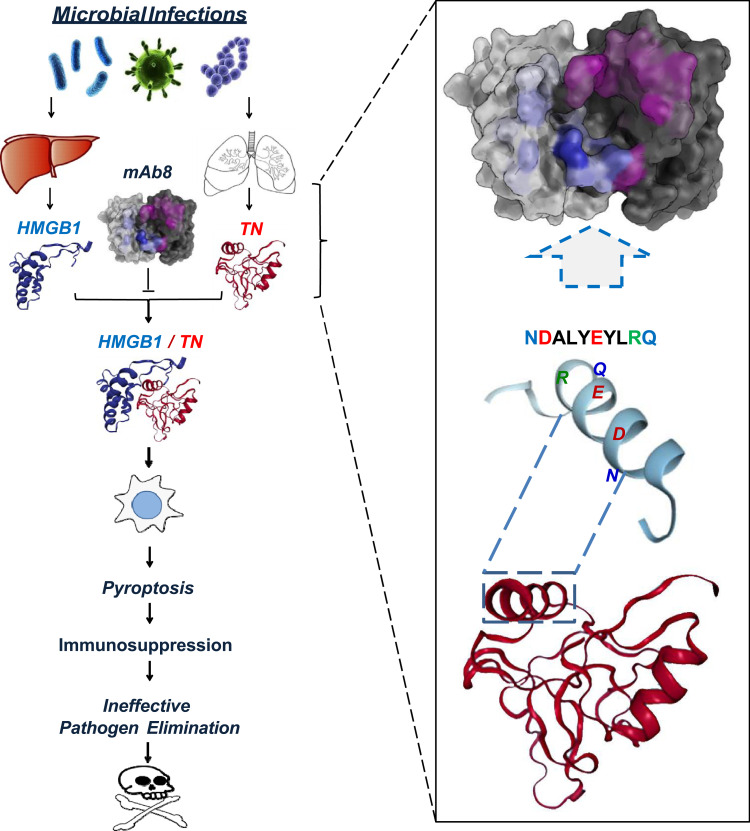Figure 3.
Proposed model for tetranectin domain-specific monoclonal antibody (mAb)-mediated protection against lethal sepsis. Severe microbial infections cause systemic accumulation of HMGB1 and concurrent depletion of TN, partly because circulating HMGB1 binds to TN to facilitate the endocytosis and degradation of TN/HMGB1 complexes by innate immune cells. The endocytosis of TN/HMGB1 complex also adversely triggers macrophage pyroptosis and immunosuppression that may compromise effective pathogen elimination and animal survival. Some TN-reactive mAbs, such as mAb8, could bind to specific epitope sequence (NDALYEYLRQ) of TN to interrupt its interaction with HMGB1, thereby impairing HMGB1 endocytosis and macrophage pyroptosis, and consequently reversing the sepsis-induced immunosuppression and animal lethality.

